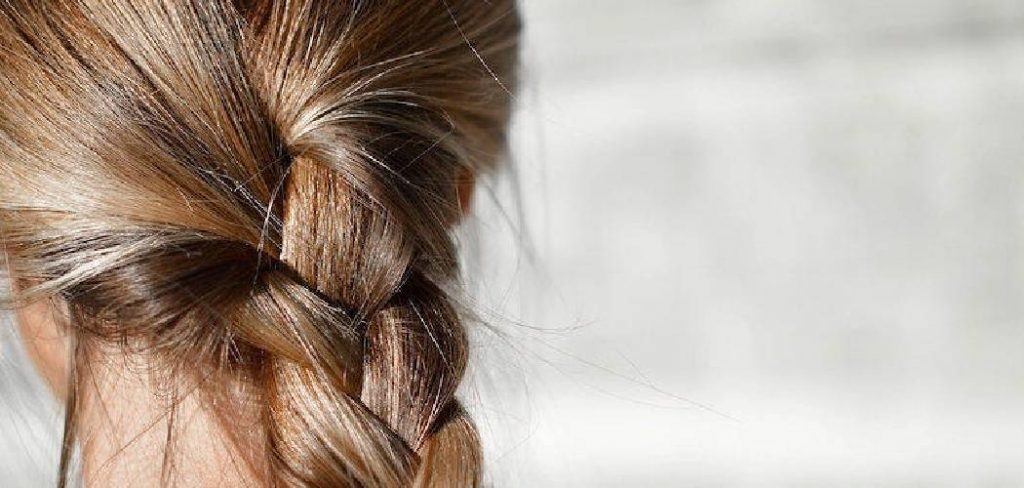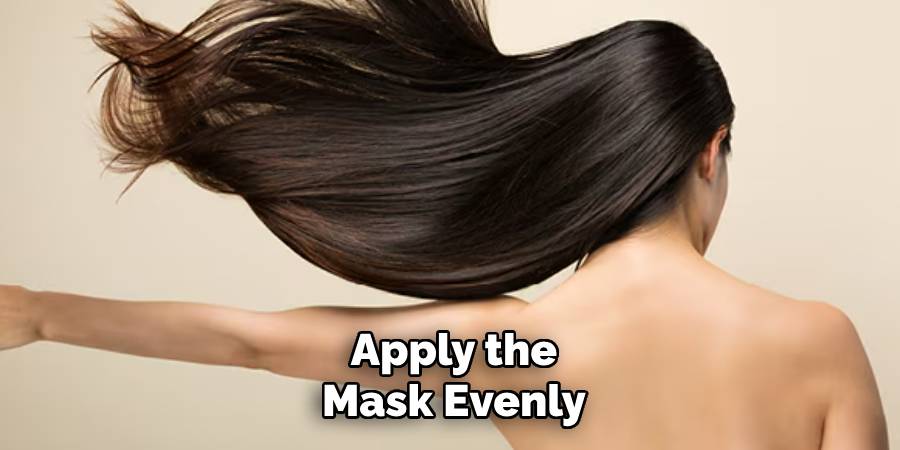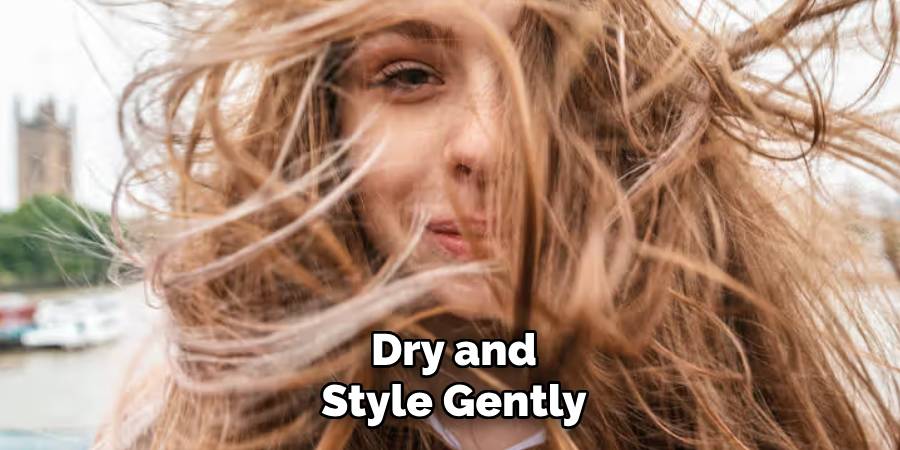Are you tired of dealing with dry, brittle hair? If so, you’re not alone. Many people struggle with dry hair due to various factors such as genetics, environmental conditions, and harsh hair products.

Dry hair can leave your locks feeling brittle, frizzy, and difficult to manage. It often results from factors like overexposure to heat styling, harsh chemicals, or environmental conditions that strip your hair of its natural moisture. Fortunately, there are plenty of natural, effective ways to restore hydration and bring life back to your hair. By incorporating simple remedies and adjusting your diy natural hair, you can revive your strands and achieve soft, shiny hair without relying on synthetic products.
This guide on how to fix dry hair naturally will explore some of the best natural techniques to fix dry hair and maintain its health.
What Are the Benefits of Using Natural Remedies for Dry Hair?
There are several benefits to using natural remedies for dry hair, including:
- No Harsh Chemicals: Unlike synthetic products, natural remedies do not contain harsh chemicals that can further damage your hair.
- Cost-effective: Most natural ingredients can be found in your kitchen or local grocery store, making them a cost-effective option compared to expensive hair products.
- Sustainable and Eco-friendly: By opting for natural remedies, you reduce your carbon footprint and contribute to the sustainability of our planet.
- Nourishing and Gentle on Your Hair: Natural remedies are packed with nutrients that nourish and strengthen your hair without causing any additional damage.
What Will You Need?
- A Basic Understanding of Your Hair Type: Before trying any natural remedies, it is important to understand your hair type and its specific needs. This will help you choose the right ingredients for your hair.
- Natural Ingredients: As mentioned earlier, most natural remedies use everyday kitchen ingredients like coconut oil, avocado, honey, etc. These are affordable and easily available.
- Mixing Bowl and Spoon: A small mixing bowl and a spoon will be needed to mix and apply the ingredients to your hair.
- Shower Cap or Towel: These will be required to cover your head while the remedy is working its magic on your hair.
10 Easy Steps on How to Fix Dry Hair Naturally
Step 1. Assess Your Hair’s Needs:
Take a closer look at your hair to determine the extent of dryness and damage. Observe if your hair feels brittle, appears frizzy, or lacks shine, as these are common indicators of dry hair. Consider factors like your hair type, recent exposure to heat styling, chemical treatments, or environmental conditions. Understanding your hair’s specific needs will help you choose the right natural remedy for optimal results.

Step 2. Detangle Gently:
Use a wide-tooth comb or your fingers to gently detangle your hair. Start from the ends and work your way up to the roots to minimize breakage. Avoid pulling or tugging, as this can cause further damage to already dry or fragile hair. For added ease, you can apply a leave-in conditioner or natural oil, such as coconut or argan oil, to provide slip and reduce tangles. Patience and a gentle touch are key to preventing unnecessary stress on your strands.
Step 3. Prepare a Natural Hair Mask:
Mixing a natural hair mask tailored to your hair’s needs can significantly improve its health and texture. For dry or damaged hair, combine two tablespoons of coconut oil, one tablespoon of honey, and one mashed ripe avocado for an intensely hydrating blend. Alternatively, for oily hair, mix two tablespoons of plain yogurt, one teaspoon of lemon juice, and one tablespoon of aloe vera gel to help balance excess oil while nourishing the scalp. Once your mask is ready, apply it evenly to your hair, focusing on the mid-lengths and ends. Leave it on for 20–30 minutes, then rinse thoroughly and shampoo as usual.
Step 4. Apply the Mask Evenly:
Using a wide-tooth comb or your fingers, distribute the hair mask evenly through your strands to ensure every section is coated. Start at the roots and work your way down to the tips, paying extra attention to areas that feel dry or damaged. For thicker or longer hair, it may help to divide your hair into sections for a more thorough application. Once applied, you can gently massage your scalp to boost circulation and enhance the mask’s effectiveness. Remember, even coverage is key to achieving the best results.

Step 5. Massage Your Scalp:
Massaging your scalp not only helps to evenly distribute the hair mask but also stimulates blood circulation, promoting healthier hair growth. Use your fingertips to apply gentle pressure in small, circular motions. Start at the crown of your head and gradually work your way around, ensuring you cover all areas. Spend at least 5-10 minutes on this step to maximize the benefits and allow the mask to deeply penetrate your hair and scalp. Relax and enjoy this soothing process as it rejuvenates your hair from root to tip.
Step 6. Cover Your Hair:
After fully applying the hair mask, cover your hair with a shower cap or a warm towel. This step helps to trap heat and moisture, creating an ideal environment for the mask to work its magic. The cover prevents the mask from drying out and ensures it penetrates deeply into each strand for optimal nourishment. Leave your hair covered for the recommended duration on the product label, typically 20-30 minutes, to allow the ingredients to fully absorb into your scalp and locks.
Step 7. Leave It On:
During this time, take the opportunity to relax and unwind. You can use the waiting period to enjoy a calming activity, such as reading a book, meditating, or simply sitting back and listening to music. Avoid touching or disturbing your hair to ensure the mask remains evenly distributed and undisturbed. This is a crucial moment for the nutrients and hydration to penetrate deeply, revitalizing your hair from root to tip.

Step 8. Rinse Thoroughly:
Rinse your hair thoroughly with lukewarm water, ensuring all traces of the hair mask are removed. Gently run your fingers through your strands to check for any leftover product, as any residue can weigh your hair down. Take your time during this step to ensure your hair feels clean and light. Once rinsed, proceed with your regular conditioning or styling routine, if needed.
Step 9. Use a Mild Shampoo and Conditioner:
Opt for a mild, sulfate-free shampoo to cleanse your hair without stripping away its natural moisture. Follow up with a lightweight conditioner to replenish hydration and leave your hair feeling soft and manageable. Focus on applying the conditioner to the mid-lengths and ends of your hair, avoiding the scalp to prevent any buildup. Rinse thoroughly with cool water to seal the cuticles and enhance shine. This step will help maintain the health and vibrancy of your hair after using the hair mask.
Step 10. Dry and Style Gently:
Dry your hair by gently patting it with a microfiber towel or a soft cotton T-shirt to minimize frizz and breakage. Avoid aggressive rubbing, as this can cause damage to the hair strands. If you use a blow dryer, opt for a low heat setting to prevent heat damage, and always use a heat protectant before styling. Alternatively, allow your hair to air-dry for a more natural look. Once dry, style your hair with soft, flexible tools or your fingers to maintain its health and keep it looking effortlessly beautiful.

By following these simple tips, you can easily protect your hair and keep it looking healthy and vibrant.
5 Things You Should Avoid
- Avoid Using Harsh Shampoos
Shampoos containing sulfates and alcohol can strip your hair of its natural oils, further drying it out. Instead, opt for sulfate-free, gentle cleansers with hydrating ingredients.
- Say No to Frequent Heat Styling
Overusing heated tools like straighteners, curling irons, and blow dryers can cause significant damage and exacerbate dryness. Minimize heat styling and always use a heat protectant if styling is necessary.
- Avoid Overwashing Your Hair
Washing your hair too often can remove essential oils needed to keep it moisturized. Stick to a hair-washing routine that works for your scalp type, typically 2-3 times a week.
- Stay Away from Chemical Treatments
Harsh chemical treatments like bleaching, perming, and excessive coloring can weaken your hair and worsen dryness. If coloring your hair, choose ammonia-free options and deep-condition regularly.
- Don’t Neglect UV Protection
Prolonged sun exposure can sap moisture from your hair and scalp, leaving it dry and brittle. Protect your hair by wearing a hat or using hair products with UV protection when spending time outdoors.
By avoiding chemical treatments and protecting yourself from UV rays, you can help maintain the health and moisture of your hair.
Conclusion
Maintaining healthy, hydrated hair requires a combination of nourishing practices and protective measures.
Focus on natural remedies, such as using moisturizing oils like coconut or argan oil, and incorporating hydrating masks made from ingredients like honey and avocado. Regular trims, a balanced diet, and reducing heat styling can also significantly improve hair moisture and strength. By adopting these simple, natural solutions, you can restore your hair’s vitality and enjoy softer, shinier locks over time.
Hopefully, the article on how to fix dry hair naturally has helped address your hair concerns.
About the Author
Jane Hubbard is a passionate beauty expert with a wealth of experience in makeup, hair, and overall beauty techniques. After years of working as a hairdresser specialist, she followed her entrepreneurial spirit and started her own consultancy business.
Jane has always been driven by her desire to help others feel confident in their own skin, and she does this by sharing her knowledge, experiences, and practical beauty tips. Through her consultancy, she empowers individuals to embrace their unique beauty, offering tailored guidance that boosts both self-esteem and personal style.
Professional Focus
- Specializes in makeup, hairstyling, and beauty consulting.
- Provides personalized beauty advice, tips, and techniques to help individuals feel confident in their appearance.
- Dedicated to staying up-to-date with the latest industry trends and developments.
- Passionate about creating a comfortable and empowering experience for every client.
Education History
- University of Craft and Design – Bachelor of Fine Arts (BFA) in Woodworking and Furniture Design
- Woodworking Apprenticeships – Extensive hands-on training with skilled craftsmen to refine carpentry and furniture making techniques
- Online Courses & Masterclasses – Continued education in advanced woodworking techniques, design principles, and specialized tools
Expertise:
- Makeup artistry, hairstyling, and beauty consulting.
- Personalized beauty techniques to enhance confidence and self-expression.
- Educating clients on how to maintain their beauty routines at home.
